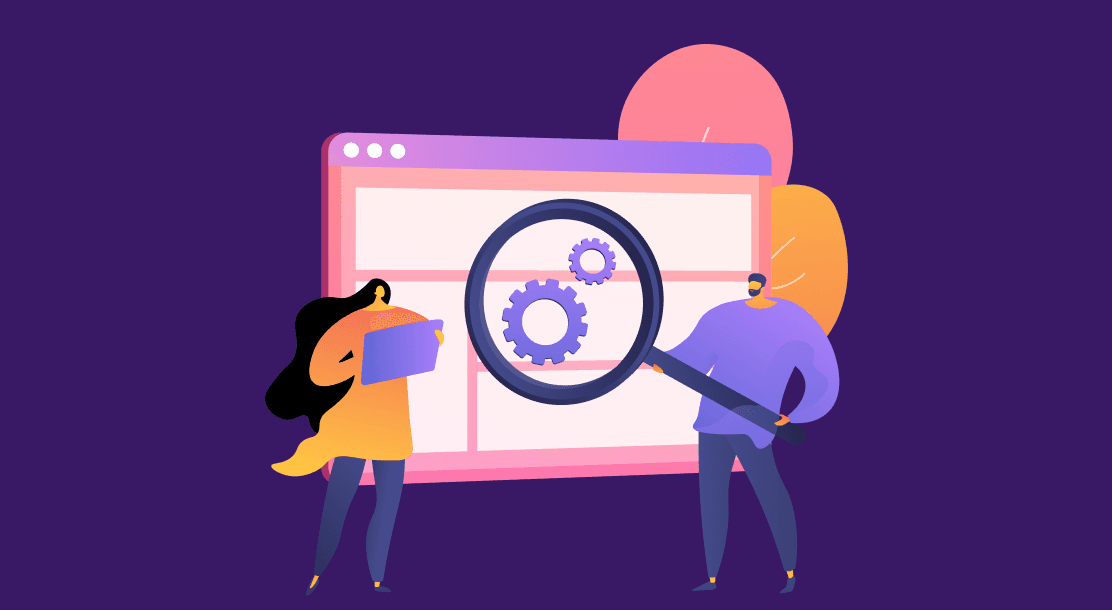
Table of Contents
- What is product design?
- What is the Relevance of Product Design Today?
- Key Benefits of Product Design
- How to do Product Design Effectively: The Design Thinking Process
- The Product Design Process
- Key Takeaways
- Conclusion
- FAQs
Product design has evolved over the past two decades. Yet, until recently, it was considered physical designing, requiring a skilled artisan to work with traditional tools to create something tangible. However, it is a far cry from what it has become today in this modern information age.
It is so prevalent that many people wonder, “What is product design?” and “How does it work?”. Today, product design applies more to digital products than physical ones. Designing, creating, and launching a website or application are examples of product designs. It takes an entire team of designers, developers, managers, and others working behind the scenes to design a product.
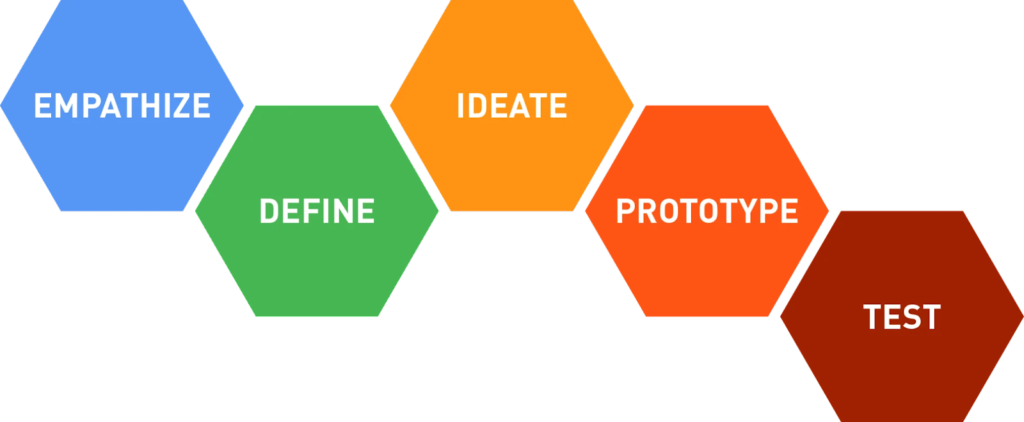
What is Product Design?
Product design is the process used by the design team to align user needs with business goals to enable brands to make sustainable and valuable products. The primary objective of the product designer is to step up user experience in the solutions they create for their users. The two disciplines of designing are the ever-evolving design thinking process and the product design process, both of which dominate the whole process. This process is a comprehensive undertaking, which further splits the process into seven essential phases. This article endeavors to describe the two steps of product design in detail, along with the tools, tips, tricks, and techniques designers can adopt to simplify their process.
What is the Relevance of Product Design Today?
There are many reasons why product design is relevant for a business today, especially from the marketing angle.
- In the face of all the competition, you cannot stand out unless you have a good product design. Having a great product design makes it easy to establish your brand in the market.
- In the technology market, especially the market where laptops and smartphones compete, product design drives interest in customers and sales. It’s not just digital products; even in the heavy machinery or services industry, design plays a critical role as the design makes the difference between efficiency and clumsiness.
- Design is utilized in many ways. Building a brand voice in the market over a period depends on cutting-edge product design.
- iPhone is a brand created with a product design that keeps user experience in mind. The brand relied on feedback, focused on the users’ pain points, and applied them to product design and development to ensure that the user’s problems were addressed. Moreover, the product design also focused on exclusivity, which most users appreciate.
- Packaging is another area where product design plays a crucial role. It is the last opportunity to leave a lasting brand impression through excellent packaging to make all the difference.
The significant role product design plays helps with the differentiation of the product and sets it apart from the competition.
Developing a good product design is more of an investment that can fetch handsome returns over a period. However, sufficient research and development need to go into product design. An example of faulty product design is EVILLA, an internet device from Sony released in the early days of the internet. It was similar to today’s modem and intended to help the members of a household access the Internet from any part of their home. However, the unwieldy size and weight of the device made it far from being portable. It was the least user-friendly product and was doomed to failure in just a few months.
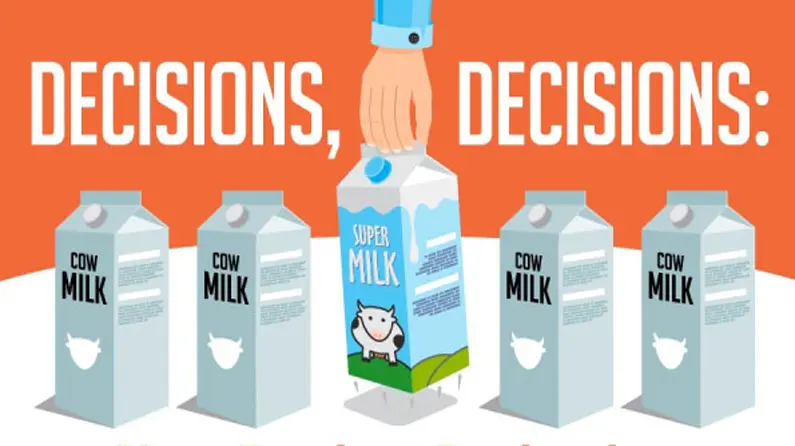
Product Design can Influence Consumer Decisions
The product can have a marked influence on consumer behavior. Most successful brands like Calvin Klein, Vuitton, Rolls Royce, BMW, Mercedes, etc., have one thing in common – a robust product design.
There are certain features that these brands have that their competitors cannot match. Hence, any brand investing heavily into product design, considering the customers’ pain points and feedback in the design process, can bet on achieving a higher ROI and can also beat the competition. That is how much customers love and admire product design, thanks to it being customer friendly and promising an unmatched experience.
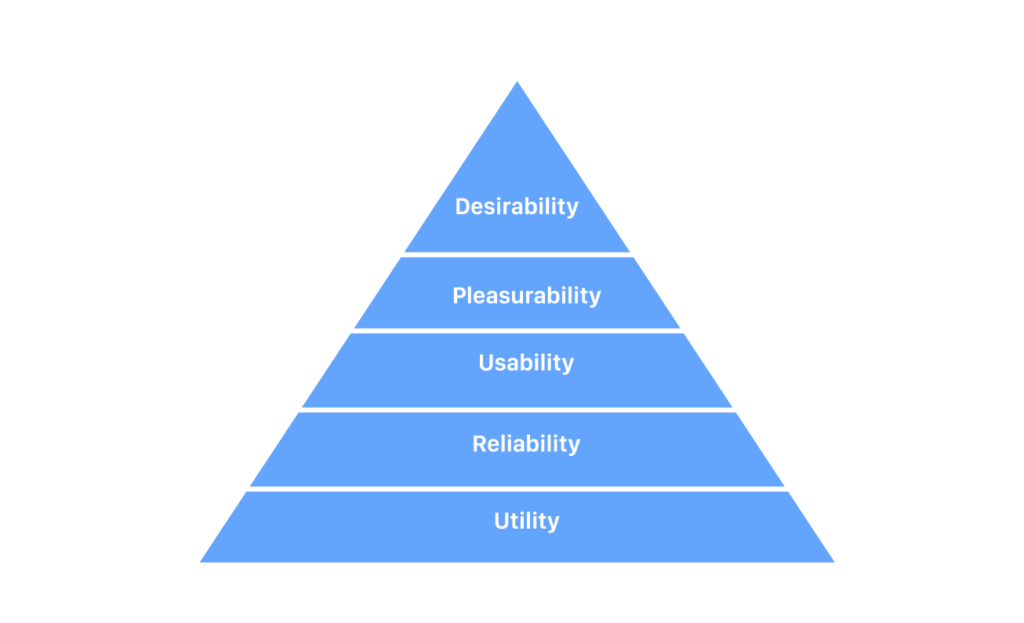
Key Benefits of Product Design
There is ample evidence that a good product design enhances business performance. Businesses that don’t give due importance to product design miss several opportunities. Product design offers several commercial benefits when applied consistently and include:
- A marked increase in sales of products or services
- A better brand positioning in the market when compared to the close competitors
- Stronger customer loyalty and absence of customer complaints
- A stronger brand identity of your business enjoys
- Product design enables companies to explore the creation of new products and expand their scope to newer markets.
- By reducing the waiting period for new products, the introduction of new products can happen more quickly.
The appropriate use of product design also draws the customer closer to your brand, giving them a solid reason to buy your product or service and not that of your competitors. Product design is a guaranteed source of differentiation, and an outstanding product design helps you stand out from the competition.
Product design also allows adding value to your products or services. Customers never hesitate to pay more for such premium products or services as they know they are paying for better usability, functionality, and admirable aesthetics.
Designed to be Efficient
In addition to improving your products and services, good product design also enhances the way you operate your business by increasing the efficiency of the process, making inputs like raw materials cheaper, and improving packaging.
While increasing the value of the products and services customers buy, efficient product design helps cut production costs, leading to substantial savings. Creating products with a well-thought-out design can also ensure environmentally friendly products that conform to various regulations and laws.
Design is not all about the outward appearance of a product, or in the case of digital products, the graphic elements of a website, etc. Product design plays an active part in every aspect of the business. Leading brands strive to bring about consistency across their products, from signage to stationery and marketing activities.

How to do Product Design Effectively: The Design Thinking Process
The design thinking process integrates seamlessly with the product design process, which entails several aspects like:

1. Empathizing
The product design guideline starts with empathizing as the first stage, where the designers get to the core of the problem and solving it is their primary goal. Such deep insights help cover all angles of the problem. In this crucial stage, the designers integrate a human touch into the human interaction part of the process, empathizing with customers’ concerns by placing themselves in their shoes. It is also the step that helps designers shed their biases, lest they manifest themselves in the product design. Designers can take a ‘clean slate’ approach from the outset by following such an approach.
2. Defining
This stage continues following the first stage, where the designers formulate a problem statement from the knowledge and perspective they have already gleaned. During this stage, the design team considers the human angle and investigates how to solve the problem.
3. Ideating
As the designer moves from collecting knowledge to the physical aspect, solid design ideas are generated by brainstorming with the team as part of the design guideline. Before deciding what is best for the customer, several concepts and features are considered. Generally, designers expect to be given a free hand while ideating to ensure the best comes out.
4. Prototype
The next stage is the prototyping phase, where the designer and the team start coming up with different versions of the product. They experiment with low-fidelity designs that still haven’t taken concrete shape yet. Various options are available to improve, re-design, re-implement and re-introduce the prototype, or you can drop the project altogether to start again. The design team gets a closer view of the initial challenges and constraints faced in the design and focuses on overcoming them all.
5. Testing
The last stage in the design process is the all-important testing stage. It involves checking and rechecking the solutions created based on customers’ pain points. In addition, designers examine whether there is any way to improve the design further. Designers may have to go back and review the design from the first stage to rule out faults and errors in the process and release the product only if they feel the testing process is complete.
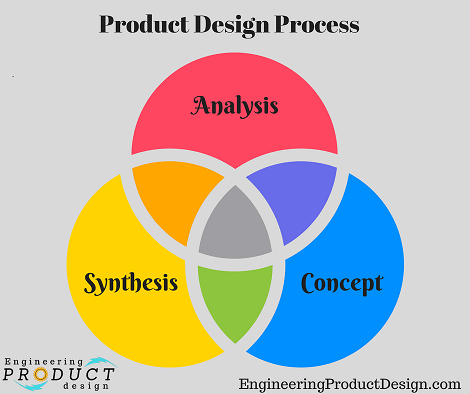
The Product Design Process
Next is the product design process, which is more complex, hence needs to be divided into significant stages like:
1. Pre-design process
The first step in the product design process happens even before an actual product design begins. It starts with establishing a goal or setting a target for the current project. As a result, this gives the systemic foundation or structural frame to the step-by-step design development process that occurs over a period.
The designer first must establish a product strategy based on the customers’ pain points and how the product design can help resolve the issues. The product design team must handle all of the challenges that crop up and avoid any pitfalls. The product design strategy gives direction to the issues and guides the designer on which path to take and how to reach the goal.
The team then focuses on preparing a value proposition map, which focuses more on the end product, and how it works for the target audience. It is quite different from product strategy, which is explored directly by the design team. Designing with the customer in mind, the design team constantly asks who the product is for when used by the customer.
2. Product research
In the next stage, the product research stage, the process of product design starts bearing fruit. However, the designers are still getting to the core of the problem to gather more insights about the product, the users’ behavior, reaction, etc. The focus here is on how to solve the issues faced by the users.
The more time the designers spend on research, the more relaxed they can be in the next few stages. Hence, the design team has to go through the research stage painstakingly and patiently. They invariably spend more time at this stage than they had earlier envisaged.
Product research forms one of the essential pillars on which the foundation of the product design process rests. Customizing the product to suit the target users’ needs is of paramount importance and, in a way, one of the primary goals of the design team. Researchers may communicate and interact with actual users to get a firsthand account of the issues they face.
Such interaction helps create a practical solution, which is the highlight of the product design. The design team may have to conduct direct interviews with the users or get inputs through an online survey with many respondents. The design team may even monitor the users in their daily life to get to the crux of the issue.
This stage also involves conducting competitive analysis, although the product may not have any real-time competitors. To avoid this, the design team looks at the competitors’ products and looks for flaws that need to be rectified in the product they are designing. The idea is also to differentiate the product from that of the competitor.
3. User analysis
Following the product research stage, designers have collected a huge amount of raw data at their disposal. However, the data is not of much use unless it is converted into legitimate and valuable insight to take the design process forward. Product research is to data collection; user analysis is to data synthesis. The research conducted by the designers serves as a base for streamlining the process of product creation.
Designers first focus on creating user/buyer personas. Once these fictitious UX personas are created, they serve as user equivalents. These personas reflect the users’ likes, dislikes, wants, needs, etc., besides other critical details useful to the designers in their product design journey.
It is easier for the designers to use this as a reference guide, and they don’t have to sift through all the data each time. All they need to do is look up the answers provided by the personas, which serve as answers to the questions that pop up during the product design process.
This stage helps designers view issues from the user perspective, serving as a sort of empathy map, which serves as an effective design tool in the hands of the product designers. The map answers crucial questions like “why a user needs such a product?” The empathy map replicates the users’ minds, reflecting what they feel, think, do and say.
4. Ideation
The next stage in the product design process is the ideation stage when designers put in order all the ideas they’ve collected. The design team brainstorms and exchanges ideas, debate them proactively and deliberate over them to come to an understanding.
It is essentially storytelling, where different scenarios are created on the storyboard and used as a tool. This is when the designers envisage how the product will merge into a user’s everyday life. The essence is to target and address user needs and ensure their pain points are considered.
Designers map a user’s journey, considering the fundamental actions they take to complete a task. It is essentially a narrative of the product that is established, with the designers visualizing the actual product, be it a website or an app.
All such efforts lead to creating information architecture, a critical part of user experience, which determines how users react to content. Otherwise known as information ecology, it provides valuable answers to understanding and controlling UX design. It is more a flow-chart plan describing how a product works, for instance, if a website, how the navigation part works, how the pages and screens get linked to one another to create a compatible road map, with a high-level view of how the website will function. It is akin to conventional architecture, where designers determine the flow of the product.
This is followed by sketching and wireframing, two critical factors in the ideation process. Designers painstakingly create individual pages and screens with low fidelity to get a fair idea of the final outcome.
Here is where the designer troubleshoots and may go back to the research stage to detect the causes of any issues that may still linger. This is essential to ensure that the lag does not persist. It also, in a way, supplements the testing process that comes later. Information architecture gives the designer an idea about the look and feel of the final product even before it is ready.
5. Design
The design phase follows the ideation and is considered one of the most critical ones in dealing with the design itself. The designer starts prototyping the product and uses functional models to check if the elements are compatible with one another. The starting point for the prototype is the home screen, from where the other sections are developed. It is the framework upon which designers test ideas, visuals, and other models to view the product comprehensively. The prototyping loop comprises three stages:
- Prototyping
- Reviewing
- Refining
Prototypes are lookalikes of the final product. Still, the designers must detect flaws, if any at this stage, or make improvements wherever possible. The review phase is when the users and stakeholders get an opportunity to test the product and offer their comments and feedback and suggest where changes need to be made. Lastly, the refining stage is when many design iterations are worked upon until one achieves a perfect finish.
6. Handover
The last part of the design process is the handover. Unless the designers are satisfied with their creation, they can’t pass it over to the developer for coding, which gives shape to the product. Designers give the developers a document highlighting all aspects of the product, otherwise known as ‘design specification’. The developer then completes the process and comes up with what the designer had in mind.
7. Testing & validation
Although handover is the last part, the process is not complete without testing and validation. Hence the design team tests the product and closely monitors to check if the product has come out to their expectations. However, for the process to be unbiased, the designer team does a usability test with actual end-users, who will critically appraise the product and give feedback. According to Jacob Neilson, the pioneer UX designer, it takes five users to test a product to ensure that 85% of usability issues are resolved.
8. Post-design process
There is a post-launch part known as the post-design process. Design is a continuous process that existed before its launch and remains active after it. The designer’s work is not over once the product is tested and validated. They have to continue working on it to ensure it doesn’t develop any flaws and act promptly on the feedback they receive from time to time. Designers can measure the product’s success using metrics gleaned from the data provided by a large number of users.
These metrics improve the product, mainly to make it even more user-friendly and functional. The users give feedback directly. Most of them may prefer to provide it with testimonials or reviews. For apps, ratings are provided at the app store or by answering questions during surveys.
Product guide design is an essential component of product design. The above-described phases in the design process cover the entire gamut of the product design process. Designers need to follow the stipulated UX product design guidelines or product design style guide to differentiate the product they are designing. This helps your product stand the test of time, though it needs continuous updating based on user feedback.
FAQs
Product design is an essential process used by designers to align a brand’s goals with user needs, thus making their products successful in the marketplace. The product designer’s primary goal is to enhance user experience through the solutions to their users. A product design process helps make the products sustainable in the market for a very long period.
Product designs can be split into process, system, and interface designs. Each type has a specific goal of handling a particular problem in user experience. However, all three types of product designs have equal significance and generally work together to achieve the desired effect in the ultimate product.
A great design makes a product successful in the market, enhancing profitability by adding to the turnover. It is an excellent design that turns the needs into reality by giving the desired shape and value to the product they seek.
Design is also instrumental in making life easy and comfortable for customers by making the products easy to use.
The process of product design comprises five stages: Brainstorming plans with team members for a new product launch; determining the pain points the customers face and the solutions to overcome them; documenting technical specs to help develop product specifications, dividing the product implementation process into iterations; and finally, testing the solution for real-time usage by the target audience before it can be released in the market.
Product design is one of the most lucrative career choices. The demand for qualified and skilled product designers is rising, and there is a perpetual shortage of capable hands in the industry. However, a career in product design calls for patience, perseverance, and hard work, but the rewards are good, and a product designer can expect to make good money.
A product designer oversees the entire process of product design. It is similar to the role of a UX designer, and the product designer needs to follow the product design guidelines and ensure there is no deviation. The first step is identifying a problem, followed by intense research to solve the customers’ pain points. However, a product designer needs to keep the company’s business objectives in mind, which must be aligned with the design team. In short, the designer must be able to view the bigger picture while designing a product.
Latest Blogs
Explore how Google’s 2025 AI search updates triggered ranking chaos. Learn actionable strategies to adapt your SEO for AI Overviews, zero-click searches, and SERP volatility. Stay ahead now.
Learn how to rank on AI search engines like ChatGPT, Perplexity, and Gemini by optimizing your content for authority, structure, and relevance. Stay ahead in AI-driven search with this strategic guide.
Explore the best healthcare SEO services for your medical practice. Improve online visibility and effectively reach more patients in need of your services.
Get your hands on the latest news!
Similar Posts

Design
7 mins read
15 Best Firms Offering Design Services in India

Design
5 mins read
All You Need to Know About Data-Driven Design

Design
6 mins read